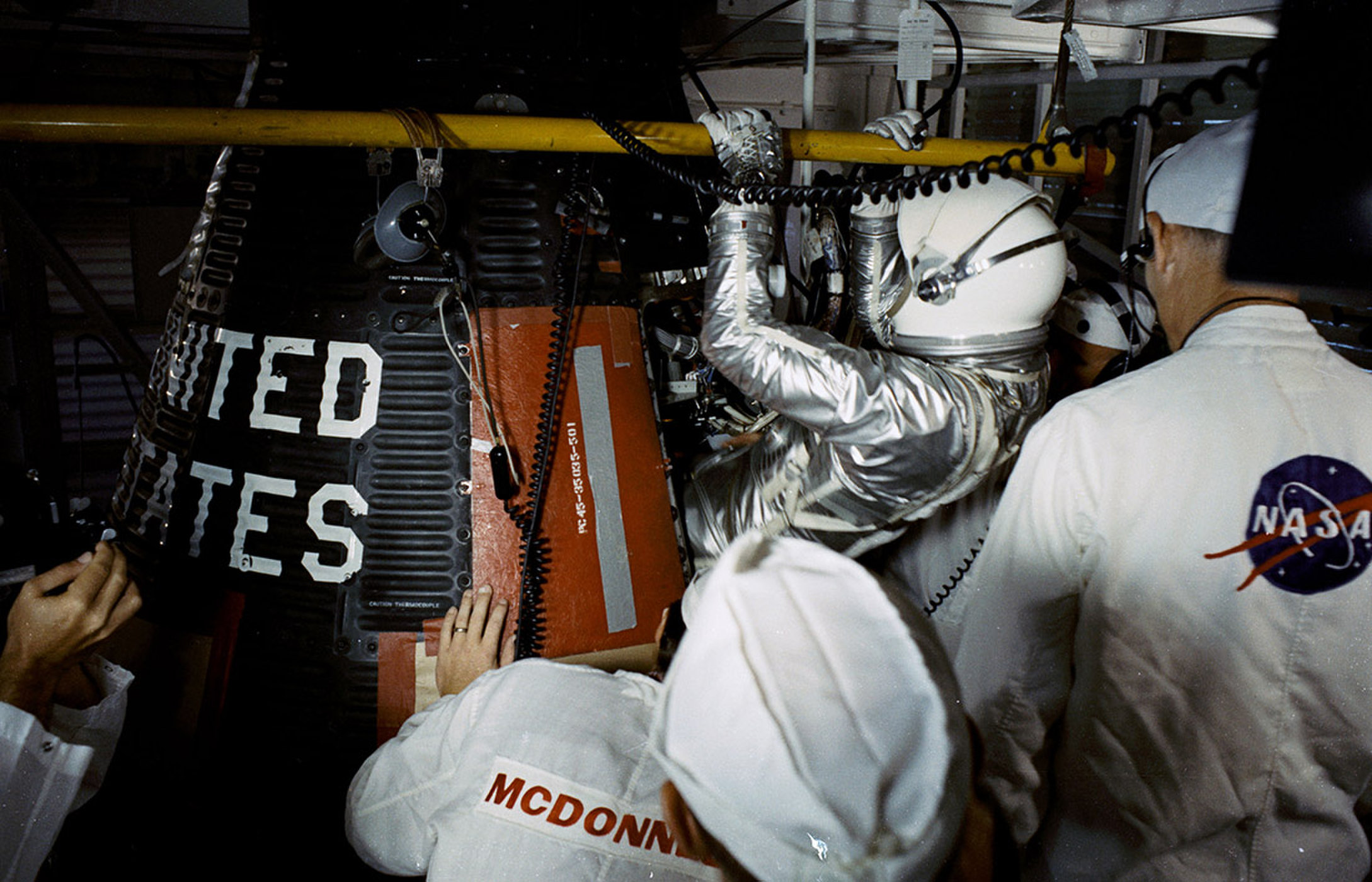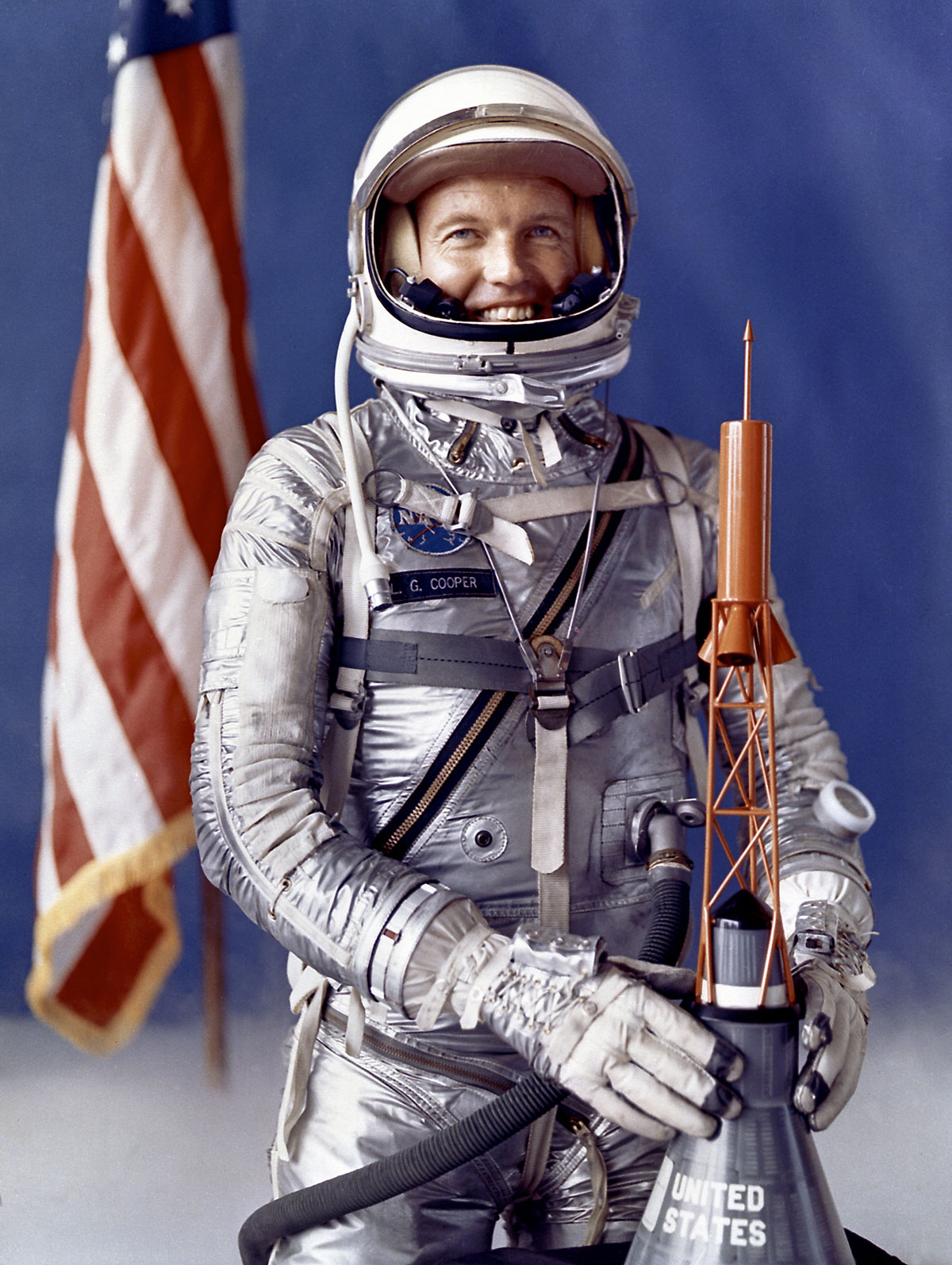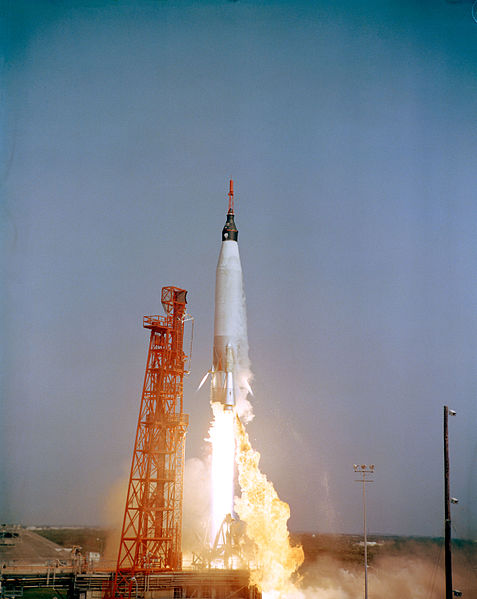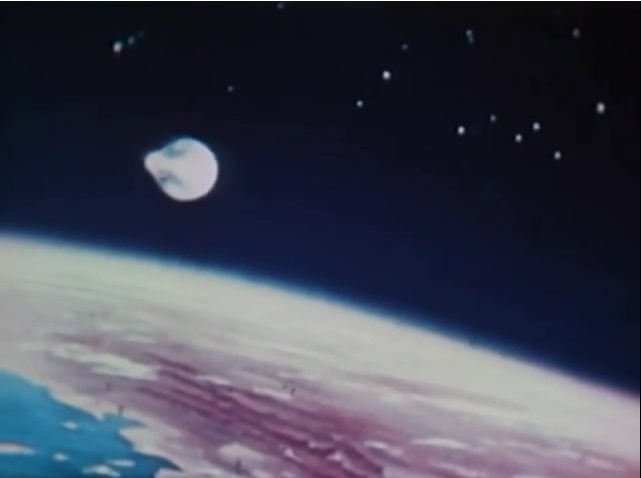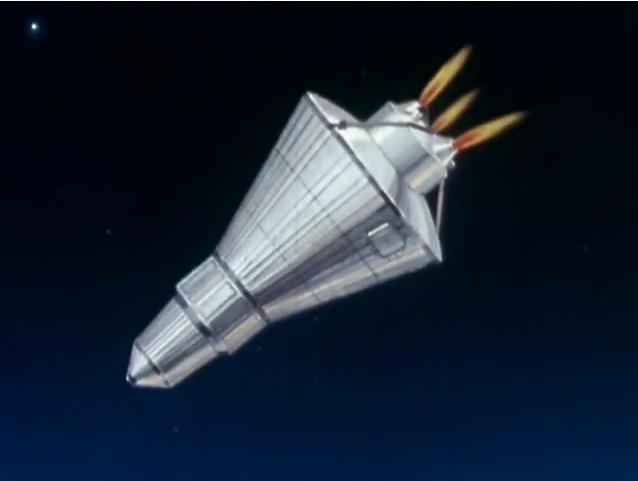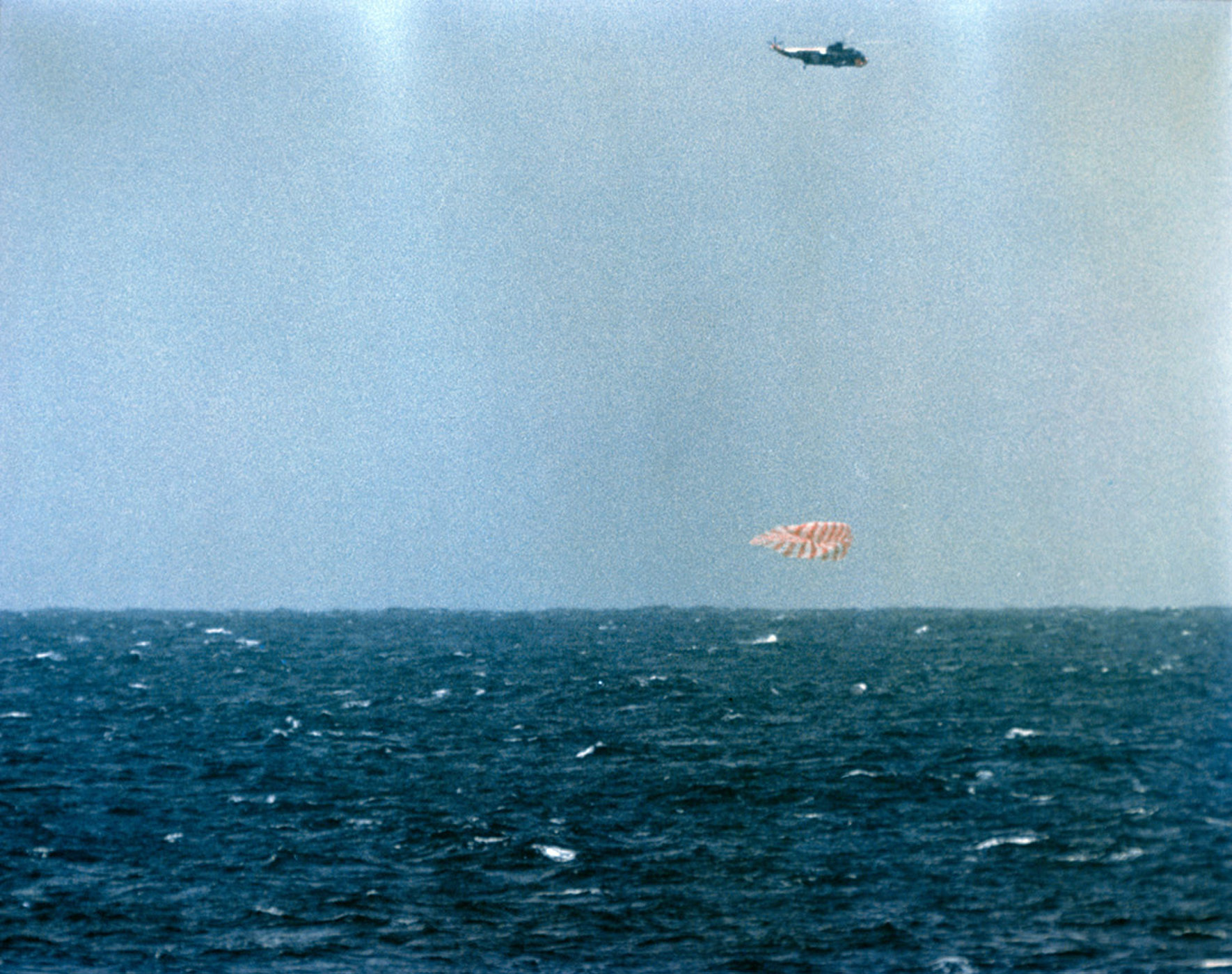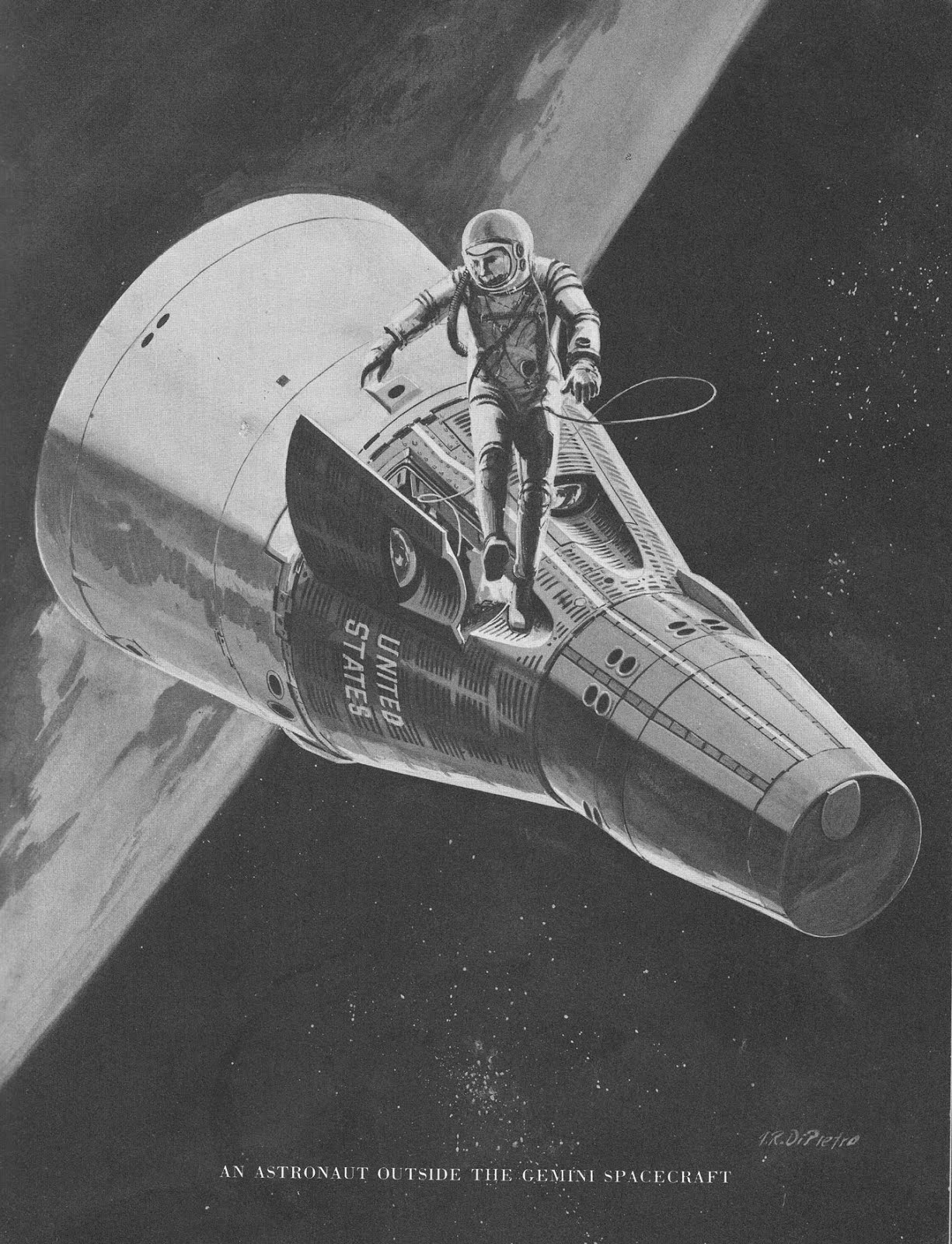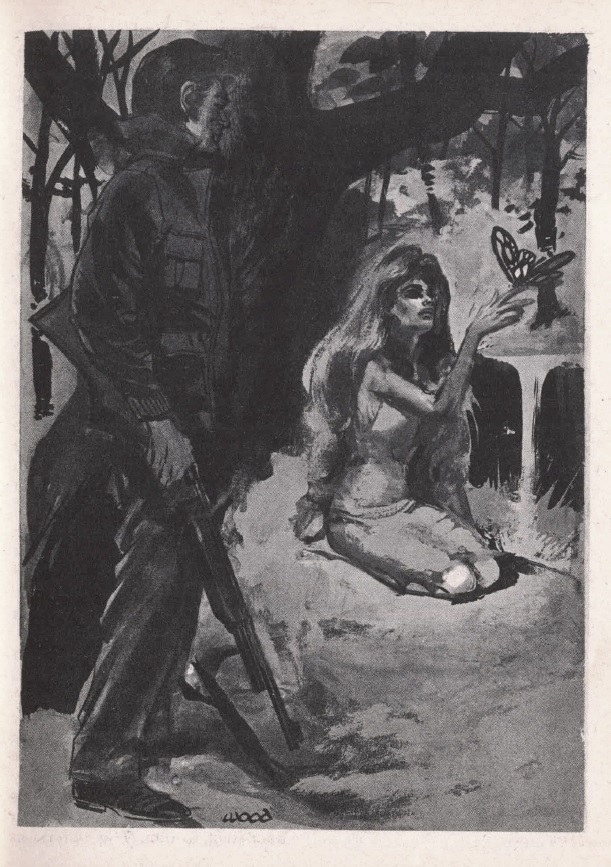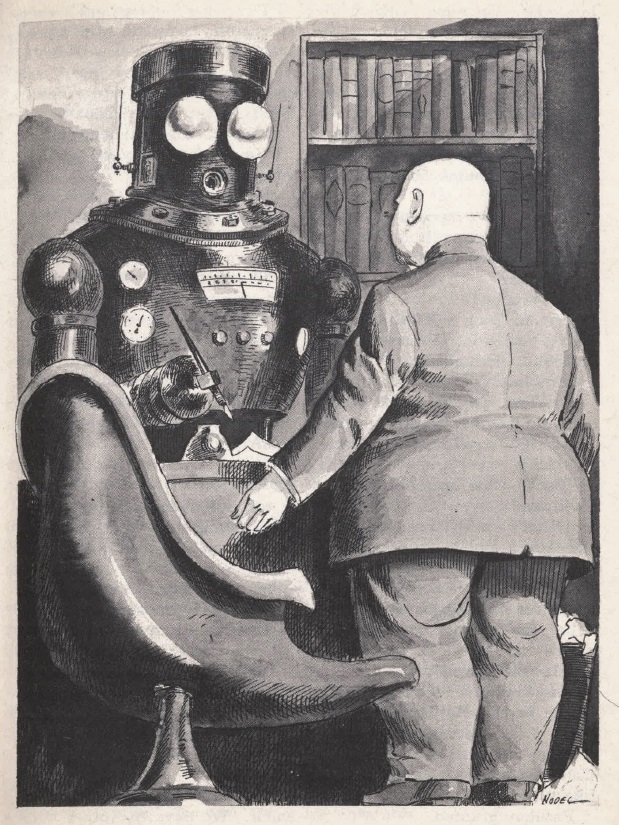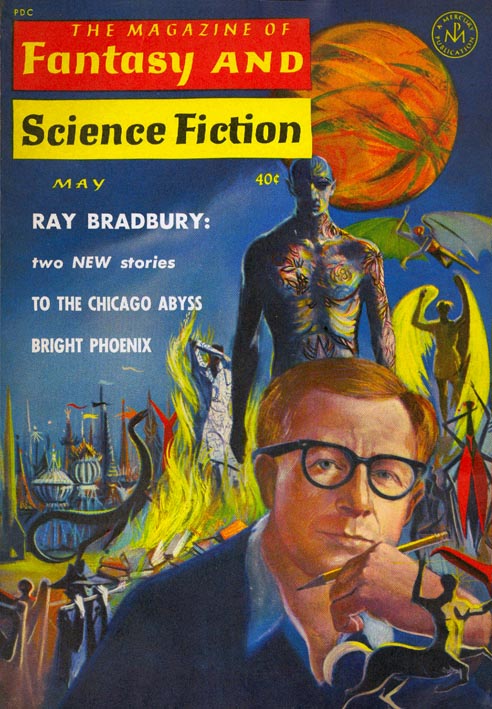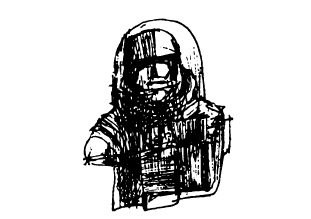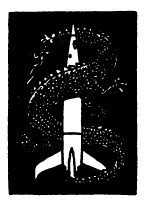
by Gideon Marcus
Graduation day is rapidly approaching. Around the world, high school seniors are about to don cap and gown and emerge from their academic cocoons. They will be transformed creatures, highly improved in comparison to their state upon entering school. They'll go on to be the next Picasso, Wright, Salk, or Meitner. Such are our hopes, anyway.

Science fiction is in the midst of a similar transition. Gestated in the womb of Mary Shelley's mind, SF was born in the late 19th Century, Mssrs. Verne and Wells serving as midwives. In the 20s, it entered grammar school under the tutelage of Hugo Gernsback, editor of Amazing Stories. At the time, SF was an undistinguished pupil, little different from its fellows at Pulp Elementary. But in 1937, SF entered Astounding Middle School, which had a most extraordinary principal, John W. Campbell, aided by a student council led by Heinlein, Asimov, and Leinster. It was a Boys' School, of course, though a few females snuck or fought their way in. This was the period in which SF began to shine, displaying a characteristic intelligence, innovation, and devotion to scientific principles.
The genre entered Galaxy High School in 1950 after taking a few preparatory classes at F&SF School for the Gifted. Galaxy High was (and to a limited degree still is) a co-ed school, and it was here that SF fully flowered, displaying hitherto unseen nuance, breadth, and passion. Its vista spread beyond the solar system to the stars. Having mastered the subjects of math, physics, and engineering in Middle School, it now turned to the subtler arts: psychology and sociology. It achieved high marks in English such that some of its compositions were included in literary anthologies alongside the works of other, older genres.
After 12 years of High School, SF is approaching its own time of graduation. Where will it head from here? There is some indication that the genre will head to New Wave University, possibly at its British campus, where it can major in philosophy and advanced writing techniques. Or it may elect to go to the twin Goldsmith Universities. The opportunities there include exciting placement in the worlds of both science and fantasy. Plus, that's where the women are…

(Accurate depiction of the SF genre — note the demographic ratio)
But there are also signs that SF may not be ready to graduate at all. Its output isn't what it used to be, and in many cases, it seems to be just going through the motions. Lately, the genre has been visiting its old stomping grounds, Astounding Elementary (recently renamed to Analog School for the Psychically Inclined). Each time, the result is a regression in the quality of its work.
Just take a look at SF's latest exam results, the June 1963 Analog. Outwardly, it reflects the work of a mature student. After all, it's a full 8.5" by 11" in dimensions and printed on slick paper. But note the content — if you were on a college (or army) recruiting board, would you take this as a sign of promise?

The Big Fuel Feud (Part 1 of 2), by Harry B. Porter

There is a war being waged inside the United States (or perhaps it is merely a spirited competition) between the factions that favor liquid-fueled rockets and those that like the solid-fueled kind. In other words, does your propellant splash or crumble? There are advantages and disadvantages to both methods, and they are of differing importance depending on whether your application is putting people in space or blowing up people in Russia. The author lays out, comprehensively and legibly (if a bit disorganizedly, particularly at the end) the history and current state of the art in solid fuels.
I found it interesting, but then, it's also my pigeon. Three stars.
The Trouble with Telstar, by John Berryman

Some science fiction takes place in the far future against an as yet dimly conceivable tableau of advanced technologies and galactic locales. Other SF is taken right out of tomorrow's headlines. This is, perhaps, the easier to write. On the other hand, it is also the most readily accessible.
Berryman, who normally writes competent psi-related stuff for Analog, turns in this competent (if annoyingly male-chauvinist) straight engineering piece on in situ satellite repair. In it, the nationalized space telcom has discovered a fatal flaw in its new Telstar line of communications satellites. Unfortunately, six of the constellation of eighteen have already been launched, and the problem cannot be duplicated precisely on the ground. A technician advances the idea of diagnosing and repairing the issue in space, arguing that it's cheaper and quicker than starting all over on the ground. Not only is the proposal accepted, but (to his dismay) the technician is drafted for the job.
Trouble is set in or around 1966 and features the real-world Saturn rocket and Air Force "Dyna-Soar" spaceplane. The details of the repair trip are incredibly authentic, down to the manufacture of specialized tools for disassembly of the Telstars in orbit, and the depiction of the tech's several spacewalks. I found myself utterly riveted by this snapshot of the near future, convinced of its reality. Four stars.
Hermit, by J. T. McIntosh

A lone male officer at a remote military outpost has orders to destroy any incoming human vessel. But when a lifeboat appears with one beautiful young woman aboard, he must decide between following his instructions or following his heart.
This is a setup that, when done well, can be quite compelling. My favorite example is Hallunication Orbit, in which the solitary caretaker of a far-off observatory must determine whether his visitors are real or not. Interestingly, that fine example was written more than a decade ago by none other than…J.T. McIntosh!
Hermit compares poorly with McIntosh's earlier tale. Not only is it clear from the beginning that the "castaway" is a spy, but the sentry's actions are illogical, treasonous, and only explained by exposition in the last few paragraphs. Two stars, and an admonition — don't plagiarize, especially from your own work!
Territory, by Poul Anderson

The trouble with do-gooding is that it's a contract with no consideration. If the people you're helping don't understand your motivations, they don't appreciate the help. At least, that's Anderson's assertion in Territory, in which human scientists were trying to avert an impending Ice Age are slaughtered by the aliens they were trying to help.
The project is salvaged by Nicholas van Rijn, a recurring Anderson character whose key traits include girth, malaprops, obnoxiousness, and the pursuit of profit. He determines that the aliens won't take assistance, but they will jump into a mutually lucrative trade deal that accomplishes the same goal. Win-win-win.
Well, wins for the characters — not for the reader. Van Rijn is barely tolerable at his best, and when Anderson has the sole surviving scientist, a young woman, fall for the lout, it took great restraint to not throw the issue into a nearby toilet. Two stars.
Ham Sandwich, by James H. Schmitz

Last up is an inconsequential story that is nowhere more at home than in the pages of Analog. An oily character, specializing in the desires of the rich, offers True Insight to those who can afford it. Such Insight is marked by the cultivation and demonstration of psychic powers, which can be greatly aided through the purchase of certain tools, available for just $1200 a-piece.
One reads the story waiting for the other shoe to drop, and when it does, it is with a dull thud. The flim-flammer is brought in on bunko charges — turns out he really is con artist. But he's then let free to continue his scheme in another city because, it turns out, he is effective at discovering latent psychic talents, who can then be recruited by the government.
It's just not very good. Two stars.

Pencils down everyone. It's time to grade the last test results before graduation day. Oh my… This month's Analog scored a dismal 2.6 stars. That's as bad as June's Galaxy (our High School is failing our pupil, too, it seems). But let's not judge out of hand, shall we? Amazing clocked in at 2.8, New Worlds at 2.9. Mediocre, but not entirely damning. Fantastic scored 3.2 stars, and F&SF garnered an impressive 3.5 star grade.
In the end, I wouldn't say this is a set of failing marks. Rather, they indicate that the genre has spent more than enough time in school and must strike out on its own to new vistas to reach the next level. Let us allow SF to graduate
We might also consider replacing the Principal at Analog — his methods are highly outdated, and we don't want to unduly burden any new pupils, now do we?




